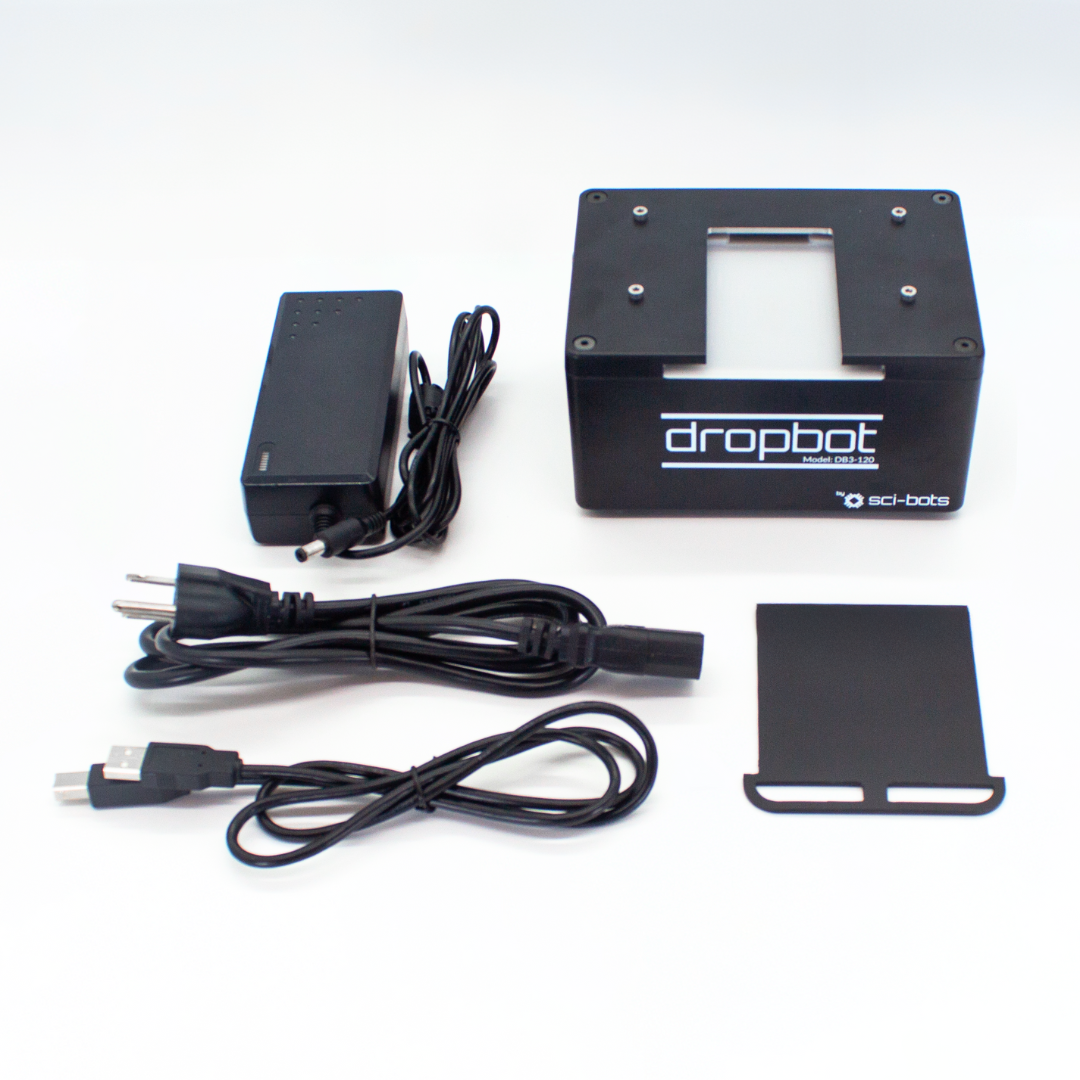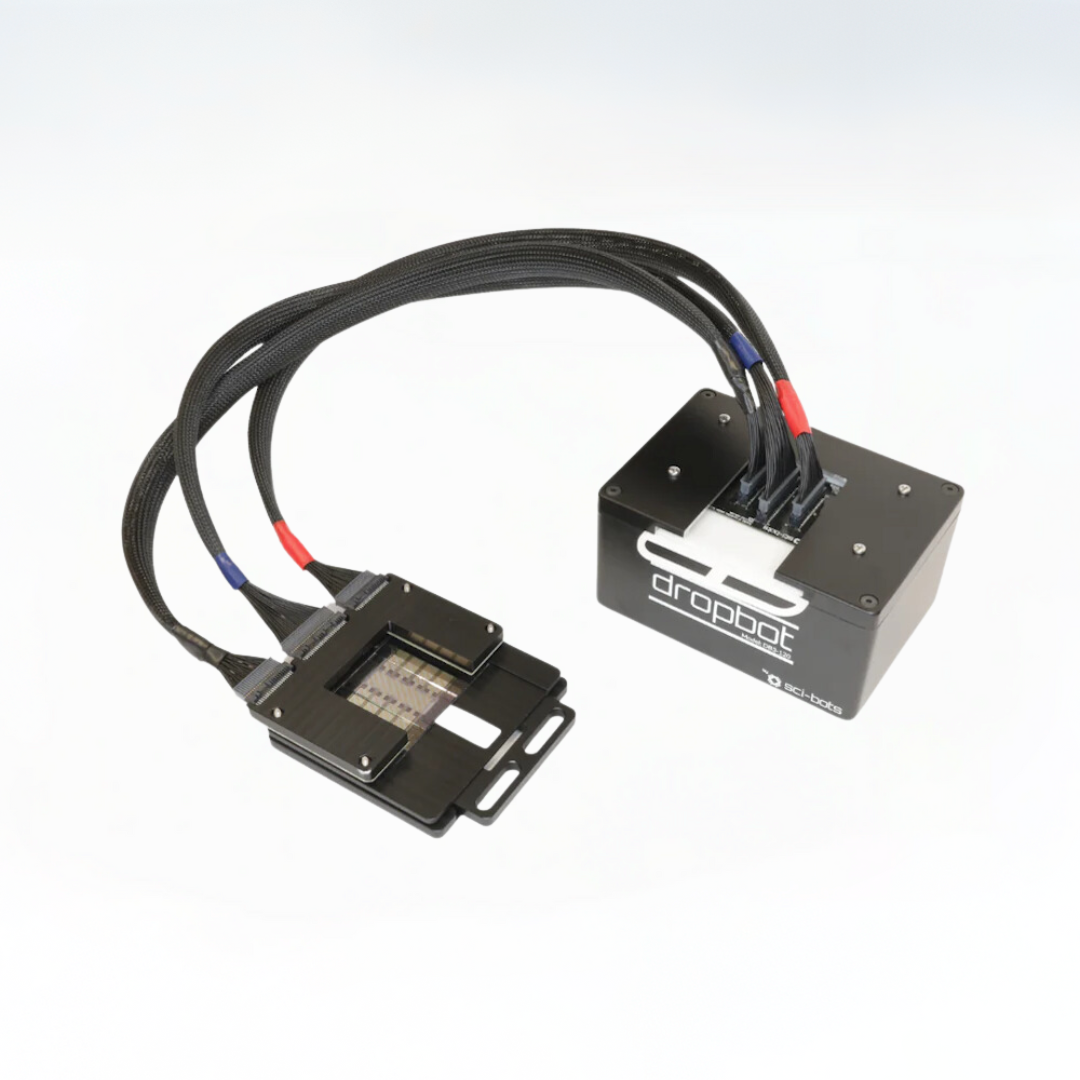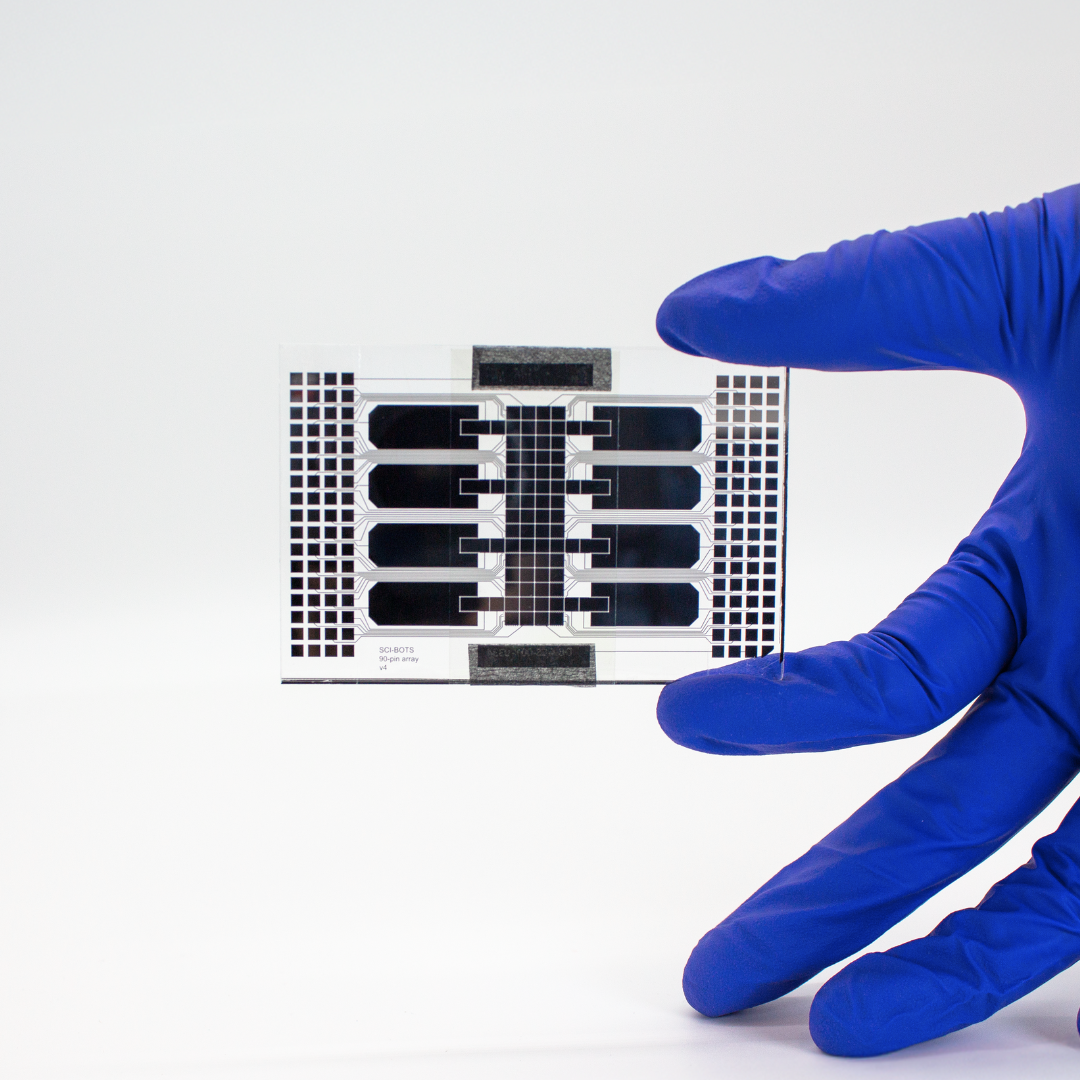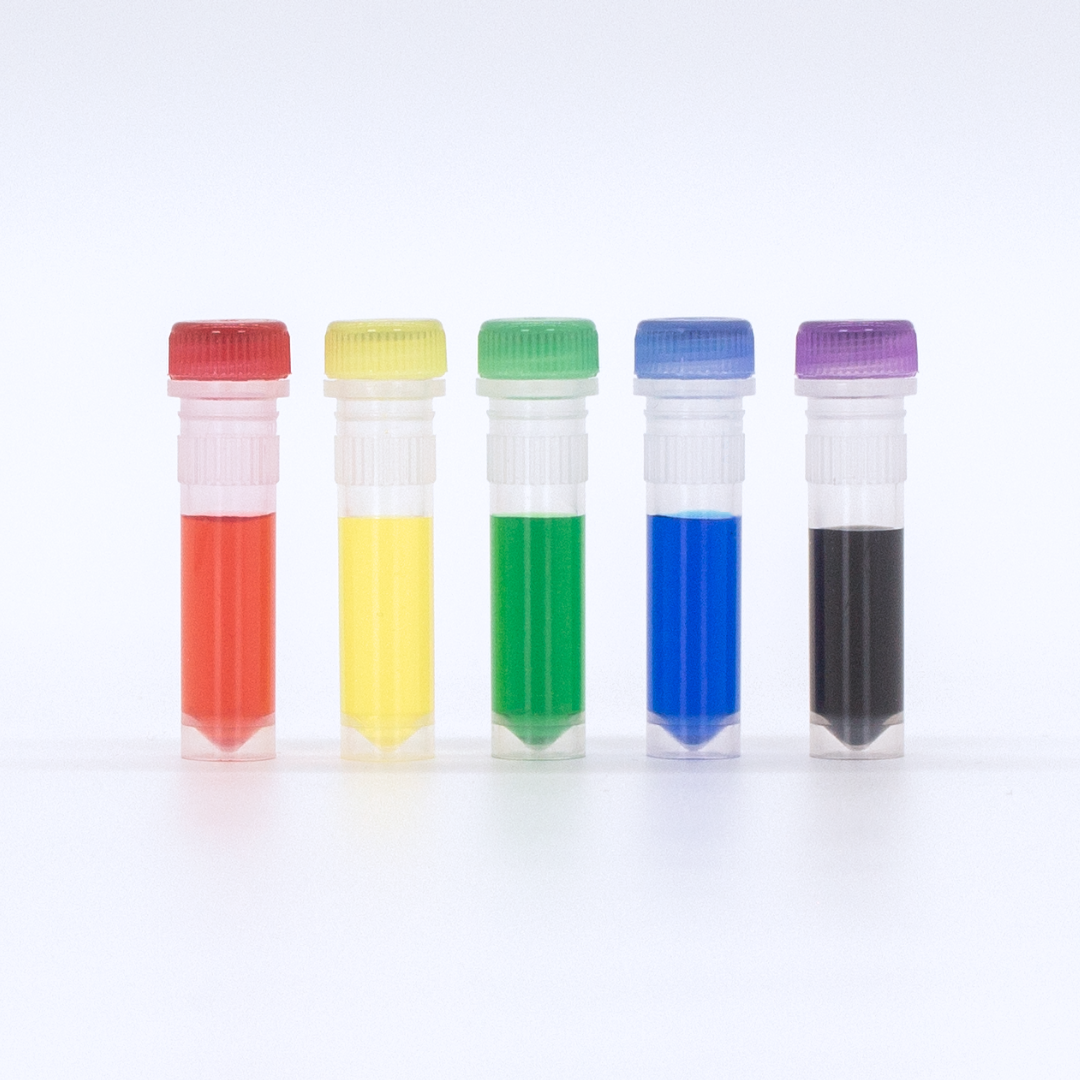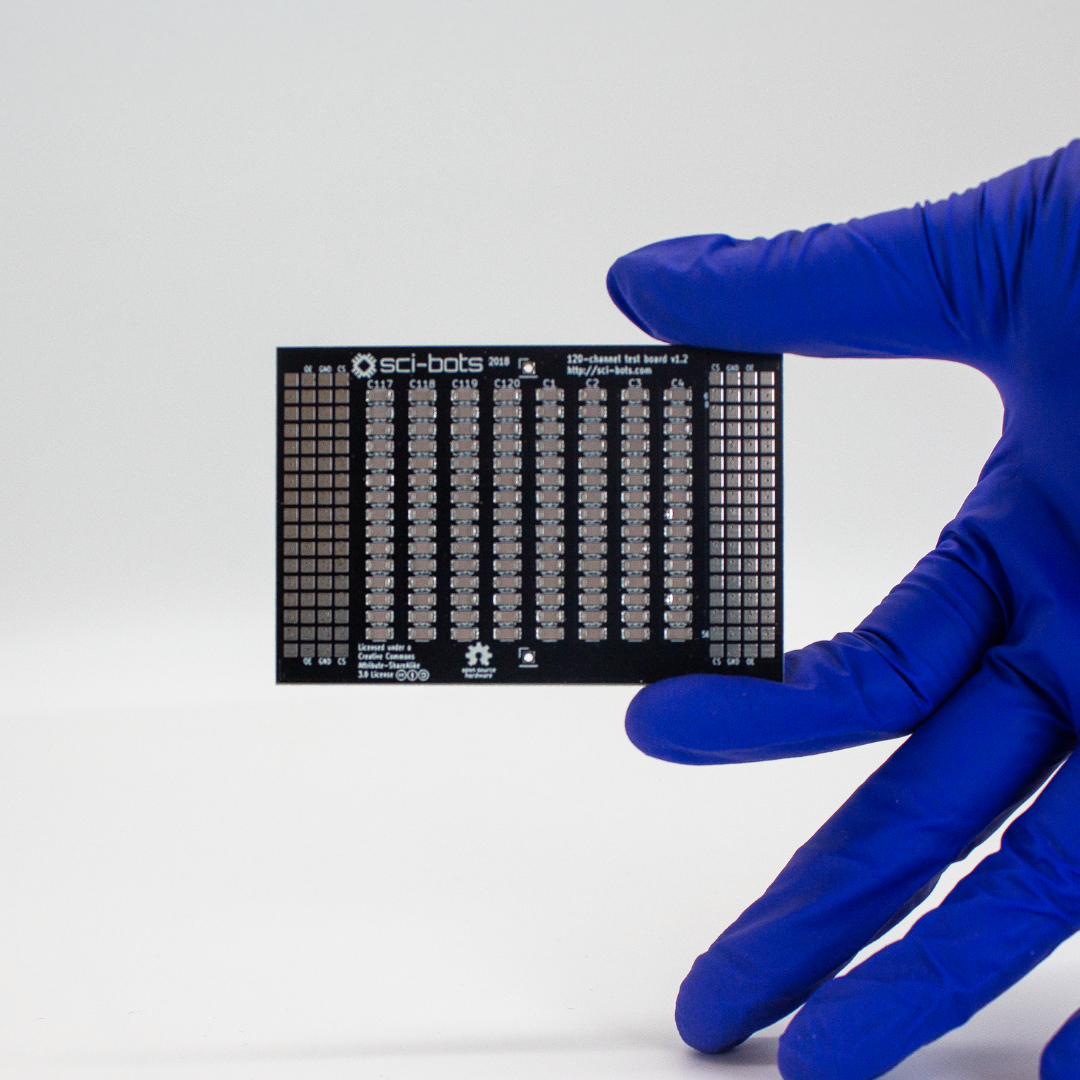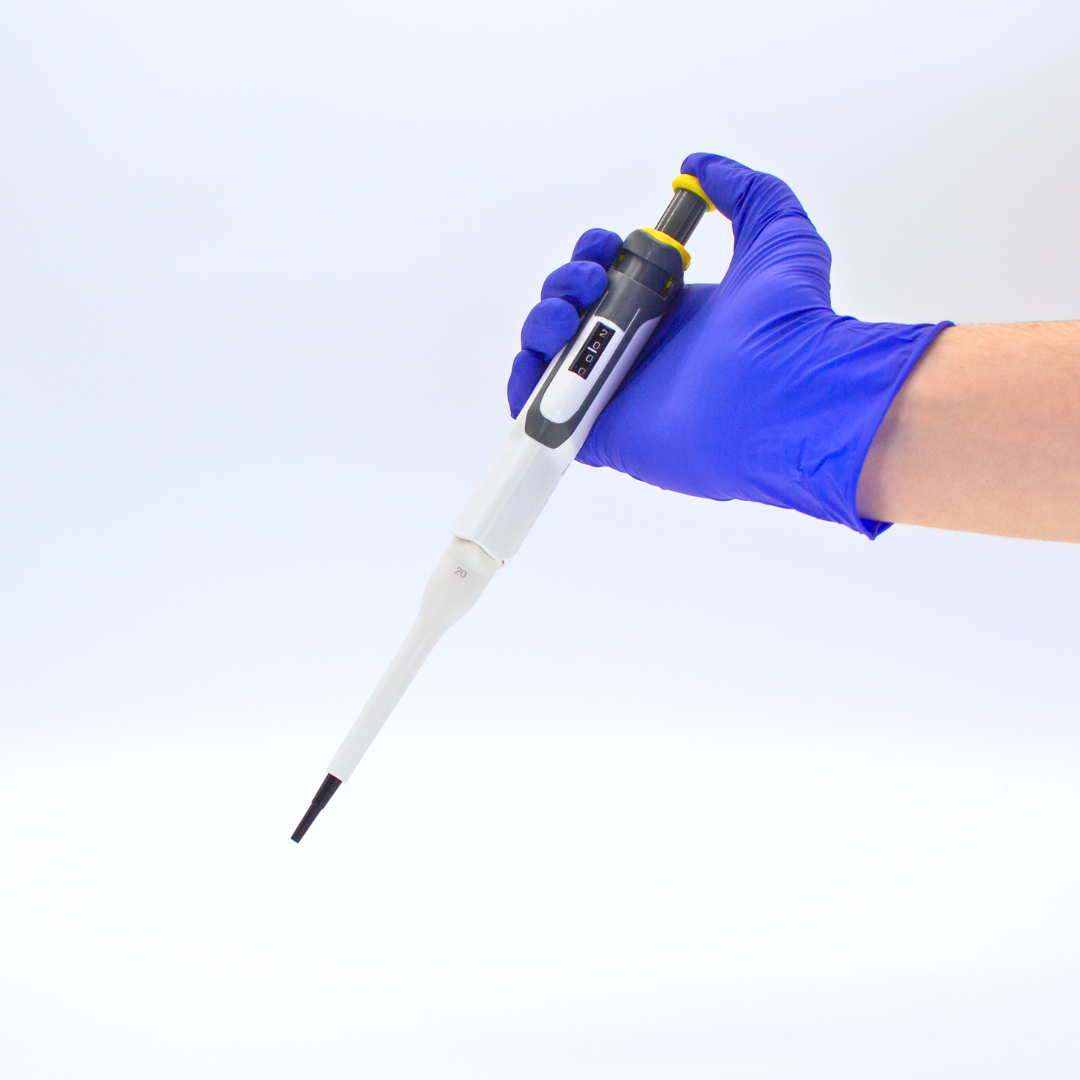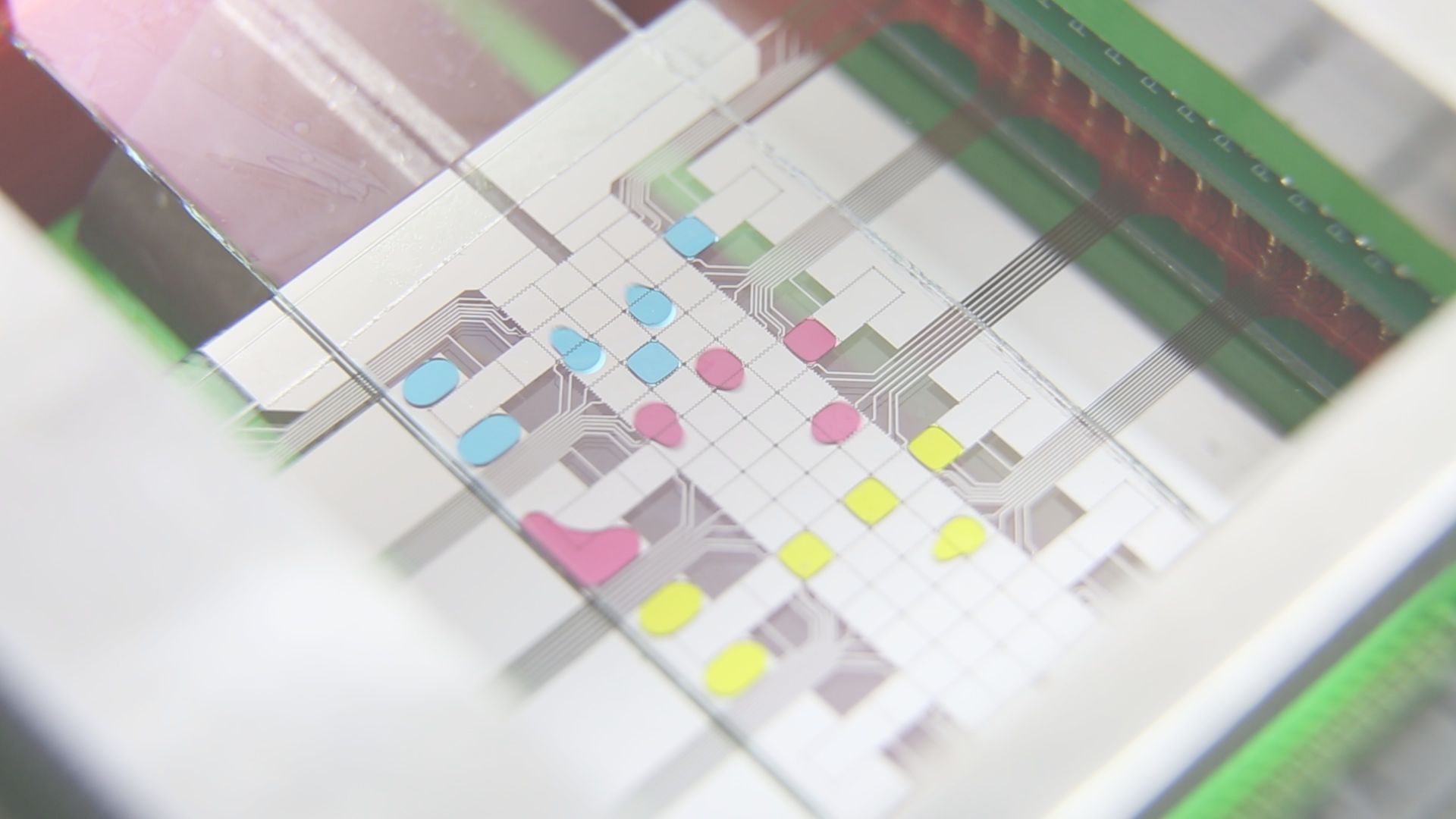featured 250+ times
Publications
Have you mentioned DropBot in a publication not listed below? Share it with us! Your paper will be added to our website and may be featured in our newsletter and on social media.
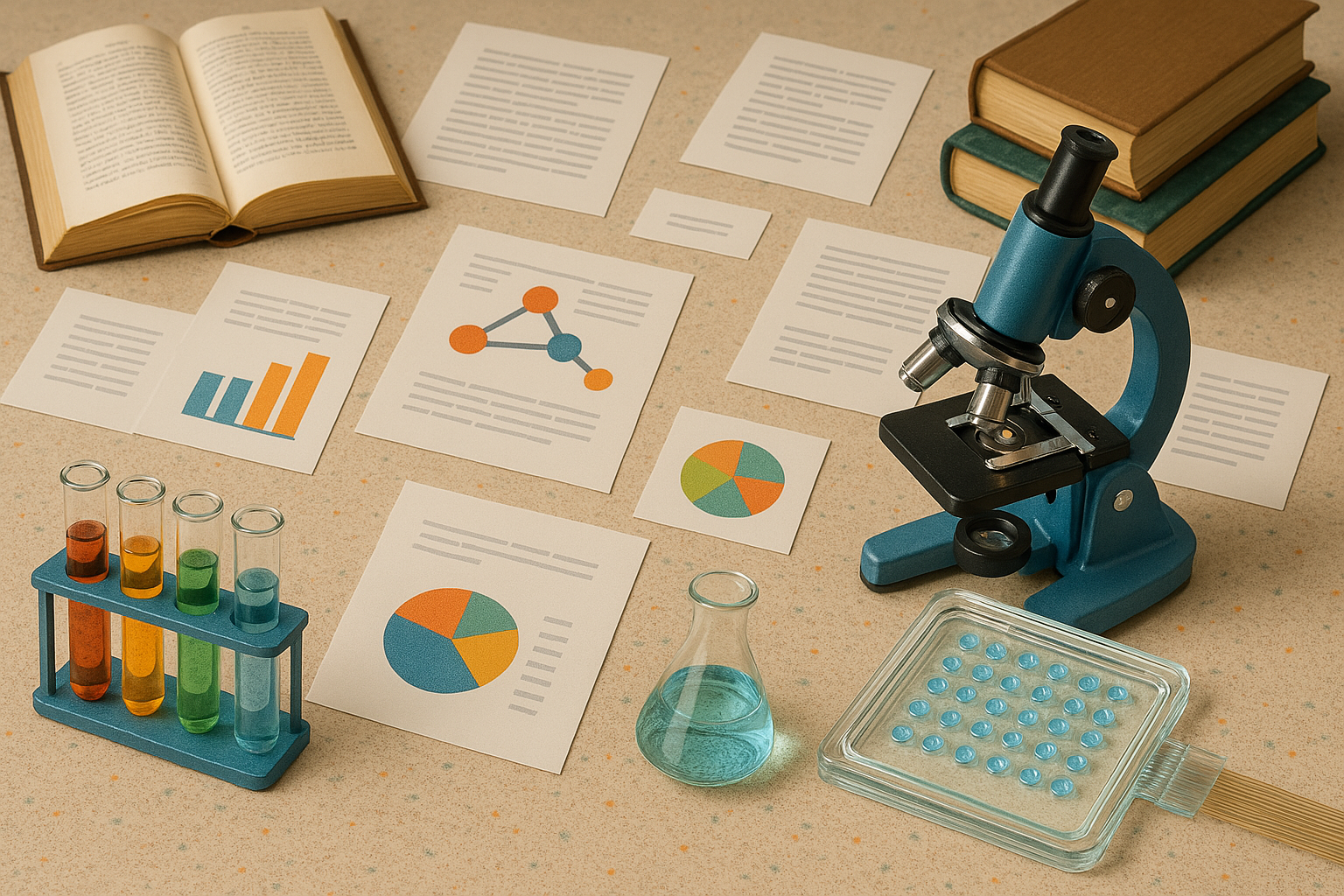
Limitless Applications
Sharing our users' findings
See how our proven DropBot technology can be used for a variety of applications ranging from analytical, to clinical and more. Researchers around the world have used our DMF system, documenting their findings in published journals.
Click the "+" signs to view related publications. Click the publication doi for the full scopus.
DropBot for Analytical Applications
Swyer et al. introduced a two-plate DMF strategy used to interface small-volume samples (<5 uL) with NMR microcoils, allowing for the determination of reaction-product diffusion coefficients as well as quantitative monitoring of reactive intermediates.
- Swyer et al. Digital Microfluidics and Nuclear Magnetic Resonance Spectroscopy for in Situ Diffusion Measurements and Reaction Monitoring.
Lab Chip 2019, 19 (4), 641–653. 10.1039/C8LC01214H
De Campos et al. introduced a solution to the “flexibility gap” between fluidic operations in digital microfluidics and embedded sensors: “plug-n-play DMF” (PnP-DMF). Proof of concept: PnP-DMF using commercial biosensors for glucose and β-ketone, a custom paperbased electrochemical sensor for lactate, and a generic screen-printed electroanalytical cell.
- De Campos et al. “plug-n-Play” Sensing with Digital Microfluidics.
Anal Chem 2019, 91 (3), 2506–2515. 10.1021/acs.analchem.8b05375
Rackus et al. describe a new technique termed pre-concentration by liquid intake by paper (P-CLIP) that addresses this mismatch, allowing digital microfluidics to interface with volumes on the order of hundreds of microliters. They successfully demonstrated its utility with a magnetic bead-based immunoassay of a malaria biomarker.
- Rackus et al. Pre-Concentration by Liquid Intake by Paper (P-CLIP): A New Technique for Large Volumes and Digital Microfluidics.
Lab Chip 2017, 17 (13), 2272–2280. 10.1039/c7lc00440k
Choi et al. successfully introduced a method to couple solid-phase microextraction (SPME) with HPLC-MS using digital microfluidics (DMF). This method was applied to the quantification of pg/mL-level free steroid hormones in urine.
- Choi et al. A Digital Microfluidic Interface between Solid-Phase Microextraction and Liquid Chromatography-Mass Spectrometry.
J Chromatogr A 2016, 1444, 1–7. 10.1016/j.chroma.2016.03.029
DropBot FOR BIOLOGICAL APPLICATIONS
Li et al. used a 3D invasion assay called cell invasion in digital microfluidic microgel systems (CIMMS) to perform cell culture and staining for studying the effect of AHR expression on invasion.
- Li et al. Analysis of the Effects of Aryl Hydrocarbon Receptor Expression on Cancer Cell Invasion via Three-Dimensional Microfluidic Invasion Assays.
Lab Chip 2022, 22 (2), 313–325. 10.1039/d1lc00854d
Alias et al. used DMF for extracting femtogram quantities of cell-free DNA (cf-DNA) form 1 uL of KSOM mouse embryo culture medium using the DropBot platform. This will pave a new path towards the lab-on-a-chip (LOC) concept.
- Alias et al. DNA Sequencing from Subcritical Concentration of Cell-Free DNA Extracted from Electrowetting-on-Dielectric Platform.
Micromachines (Basel) 2022, 13 (4), 1–9. 10.3390/mi13040507
Liu et al. developed a DMF system for rapid whole genome amplification using as low as 10 fg of C. glutamicum DNA within 2 h and to identify the target bacterium within 30 min for rapid MinION sequencing. This approach can be used to identify microbes with minute amounts of genetic material in samples depleted of human cells within 3 h.
- Liu et al. Amplification of Femtograms of Bacterial DNA within 3 h Using a Digital Microfluidics Platform for MinION Sequencing.
ACS Omega 2021, 6 (39), 25642–25651. 10.1021/acsomega.1c03683
Lamanna et al. introduced DMF Isolation of Single Cells for -Omics (DISCO), which combines DMF, laser cell lysis, and AI-driven image processing to collect the contents of single cells from heterogeneous populations. The results confirm the utility of DISCO for sequencing at levels that are equivalent to or enhanved relative to the state of the art.
- Lamanna et al. Digital Microfluidic Isolation of Single Cells for -Omics.
Nat Commun 2020, 11 (1), 1–13. 10.1038/s41467-020-19394-5
Li et al. introduced the Cell Invasion in Digital Microfluidic Microgel Systems (CIMMS) with a breast cancer model, which bridges the gap between microfluidic methods in which cells invade into free space and those in which cells invade into hydrogels.
- Li et al. Cell Invasion in Digital Microfluidic Microgel Systems.
Sci Adv 2020, 6 (29), 1–12. 10.1126/sciadv.aba9589
Leipert et al. developed protocols for bottom-up LC-MS based proteomics sample preparation for as little as 100 mammalian cells on a DMF device to overcome previously unfeasible proteome analysis of samples prepared on-chip. This demostrated the first sample preparation workflow for proteomics on a DMF chip, allowing the sensitive analysis of limited biological material.
- Leipert et al. Miniaturized Sample Preparation on a Digital Microfluidics Device for Sensitive Bottom-up Microproteomics of Mammalian Cells Using Magnetic Beads and Mass Spectrometry-Compatible Surfactants.
Lab Chip 2019, 19 (20), 3490–3498. 10.1039/c9lc00715f
Yu et al. introduced an integrated microfluidic system for real-time evaluation of dopamine homeostatis in vitro and examined behavior of differentiated cells upon exposure to four dopamine transporter anti-agoists to study their pharmacokinetics. They propose this platform should be adaptable for any application that could benefit from high-temporal resolution electroanalysis combined with multi-day cell culture using small numbers of cells.
- Yu et al. A Microfluidic Platform for Continuous Monitoring of Dopamine Homeostasis in Dopaminergic Cells.
Microsyst Nanoeng 2019, 5 (1). 10.1038/s41378-019-0049-2
Sathyanarayanan et al. developmed and characterized DMF immobilized enzyme reactors (IMERs) for studying cytochrome P450-mediated drug metabolism in vitro on the droplet scale. The DMF devices also incorporated inexpensive microheaters for on-demand regio-specific heating of the IMERs, combined with a commercial well-plate reader for fluorescense quantification.
- Sathyanarayanan et al. Digital Microfluidic Immobilized Cytochrome P450 Reactors with Integrated Inkjet-Printed Microheaters for Droplet-Based Drug Metabolism Research.
Anal Bioanal Chem 2018, 410 (25), 6677–6687. 10.1007/s00216-018-1280-7
DropBot FOR CLINICAL APPLICATIONS
Zhang et al. paired an electrochemical impedence spectroscope (EIS)-based biosensor in a DMF device to quantitate human peripheral blood mononuclear cell (PBMC), which indicates a patent’s immune function to various diseases and therapies.
- Zhang et al. A Digital Microfluidic Device Integrated with Electrochemical Impedance Spectroscopy for Cell-Based Immunoassay.
Biosensors (Basel) 2022, 12 (5), 1–14. 10.3390/bios12050330
Sklavounos et al. developed DMF hemagglutination assays for blood typing, donor compatibility testing and hematocrit analysis , paired with a unique automated readout tool. A non-DMF-expert at a hospital trauma centre was able to successfully perform the assays.
- Sklavounos et al. Digital Microfluidic Hemagglutination Assays for Blood Typing, Donor Compatibility Testing, and Hematocrit Analysis.
Clin Chem 2021, 67 (12), 1699–1708. 10.1093/clinchem/hvab180
Sklavounos et al. used DMF, paired with a heating module and a machine-learning-enabled low-cost colour camera for real-time absorbance and fluorescent sample monitoring to perform automated and simultaneous bacterial classification (BC) and antibiotic susceptibility testing (AS).
- Sklavounos et al. Bacterial Classification and Antibiotic Susceptibility Testing on an Integrated Microfluidic Platform.
Lab Chip 2021, 21 (21), 4208–4222. 10.1039/d1lc00609f
Dixon et al. used DMF to succesfully perform a blood-plasma separation with from a finger-stick blood sample and demonstrated a 21-step rubella viruse IgG immunoassay.
- Dixon et al. Direct Loading of Blood for Plasma Separation and Diagnostic Assays on a Digital Microfluidic Device.
Lab Chip 2020, 20 (10), 1845–1855. 10.1039/d0lc00302f
Sathyanarayanan. et al. used DMF for rapid determination of individual alterations in hepatic cytochrom P450 (CYP) enzyme activity from human-derived liver samples. They successfully interface the DMF chip with a standard well-plate reader for fluorescent imaging, as well as integrated heating with DMF.
- Sathyanarayanan et al. Digital Microfluidics-Enabled Analysis of Individual Variation in Liver Cytochrome P450 Activity.
Anal Chem 2020, 92 (21), 14693–14701. 10.1021/acs.analchem.0c03258
Ng et al. developed a compact and portable, field-deployable, point-of-care DMF system using inexpensive inkjet-printed DMF chips that can rapidly perform magnetic-bead based ELISA immunoassays on a small volume of capillary blood for disease-specific antibodies.
- Ng et al. A Digital Microfluidic System for Serological Immunoassays in Remote Settings.
Sci Transl Med 2018, 10 (438), 1–13. 10.1126/scitranslmed.aar6076
Wondimu et al. presented a novel multi-sensor chip comprising an array of whispering-gallery mode (WGM) micro-goblet lasers integrated into a digital microfluidic (DMF) system for label-free detection of clinical biomarkers.
- Wondimu et al. Integration of Digital Microfluidics with Whispering-Gallery Mode Sensors for Label-Free Detection of Biomolecules.
Lab Chip 2017, 17 (10), 1740–1748. 10.1039/c6lc01556e
Abdulwahab et al. developed a novel technique powered by DMF that integrated tissue-liquid extraction and magnetic bead-based competitive immunoassay for quantification of estradiol in mg-sized core needle biopsy (CNB) tissue samples, wit a turnaround of ~40 mins.
- Abdulwahab et al. Towards a Personalized Approach to Aromatase Inhibitor Therapy: A Digital Microfluidic Platform for Rapid Analysis of Estradiol in Core-Needle-Biopsies.
Lab Chip 2017, 17 (9), 1594–1602. 10.1039/c7lc00170c
Customization and Extended Applications
von der Ecken et al. developed a new method to produce DMF devices using vertical addressing of 1-plane electrodes (VAPE-DMF) to allow higher throughput compared to our standard chip designs. Their proof-of-concept device with an array of 336 electrodes to handle 48 droplets to run 24 reactions in parallel.
- von der Ecken et al. Vertical Addressing of 1-Plane Electrodes for Digital Microfluidics.
Adv Mater Technol 2022, 7 (7), 1–10. 10.1002/admt.202101251
Lu et al. sucessfully monitored local temperatures when CsPbBr3 nanocrystal-Hyflon films immersed in aqueous solutions were incorporated into a DMF platform for high resolution thermal mapping, analyzing temperature distribution on chips.
- Lu et al. Composite Films of CsPbBr3 Perovskite Nanocrystals in a Hydrophobic Fluoropolymer for Temperature Imaging in Digital Microfluidics.
ACS Appl Mater Interfaces 2020, 12 (17), 19805–19812. 10.1021/acsami.0c02128
Sathyanarayanan et al. demonstrated integration of DMF with in-channel separation systems using only low-cost and accessible (non-cleanroom) manufacturing techniques compatible with our DropBot.
- Sathyanarayanan et al. A Digital-to-Channel Microfluidic Interface via Inkjet Printing of Silver and UV Curing of Thiol–Enes.
Adv Mater Technol 2020, 5 (10), 1–9. 10.1002/admt.202000451
Swyer et al. used force-velocity plots to characterize droplet movement in DMF, which was found to be consistent with a simple theoretical framework for understanding dissipation effects for droplets in two-plate, air-filled devices.
- Swyer et al. Velocity Saturation in Digital Microfluidics.
Langmuir 2019, 35 (15), 5342–5352. 10.1021/acs.langmuir.9b00220

